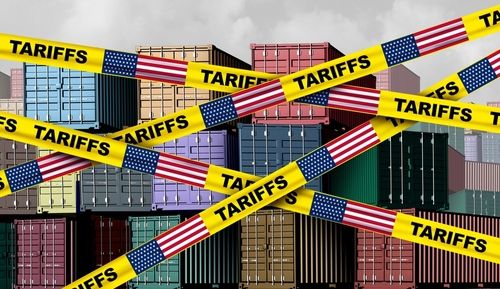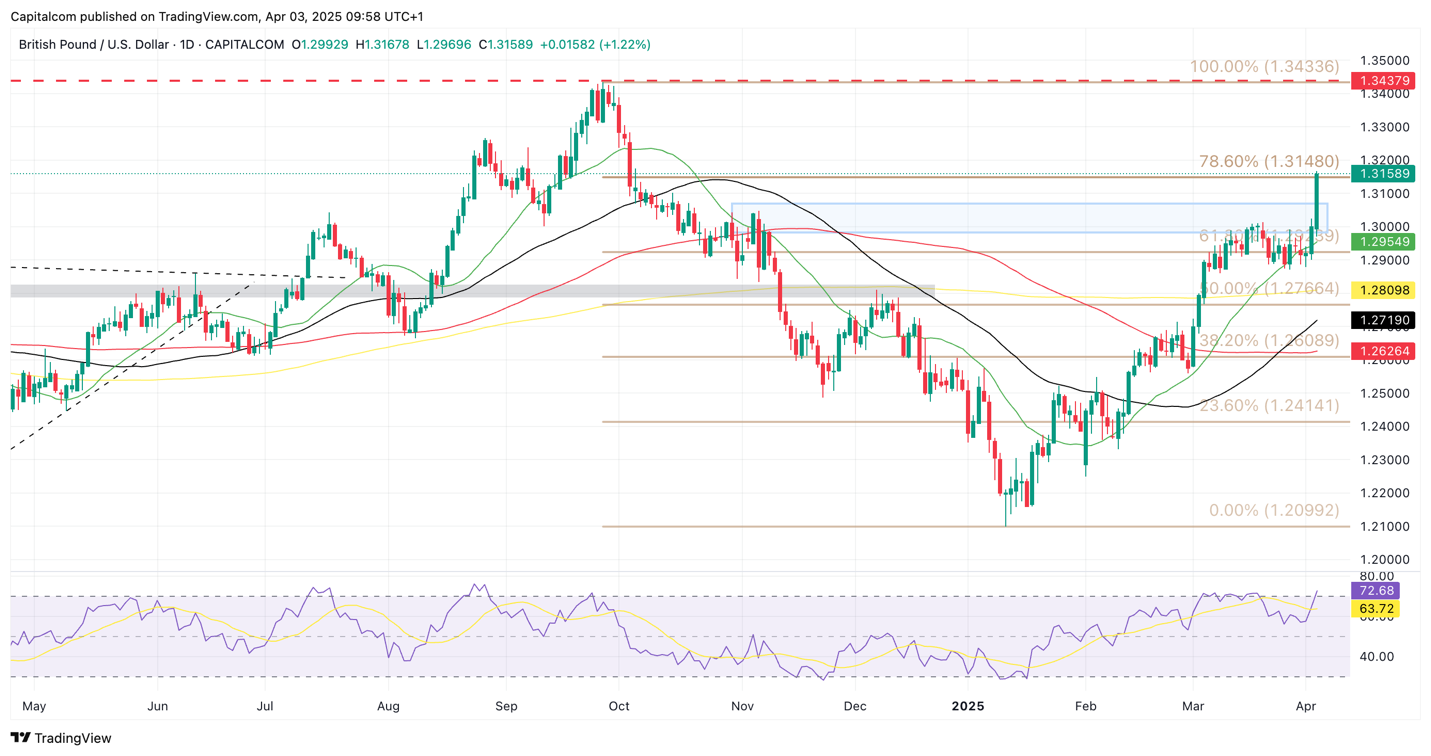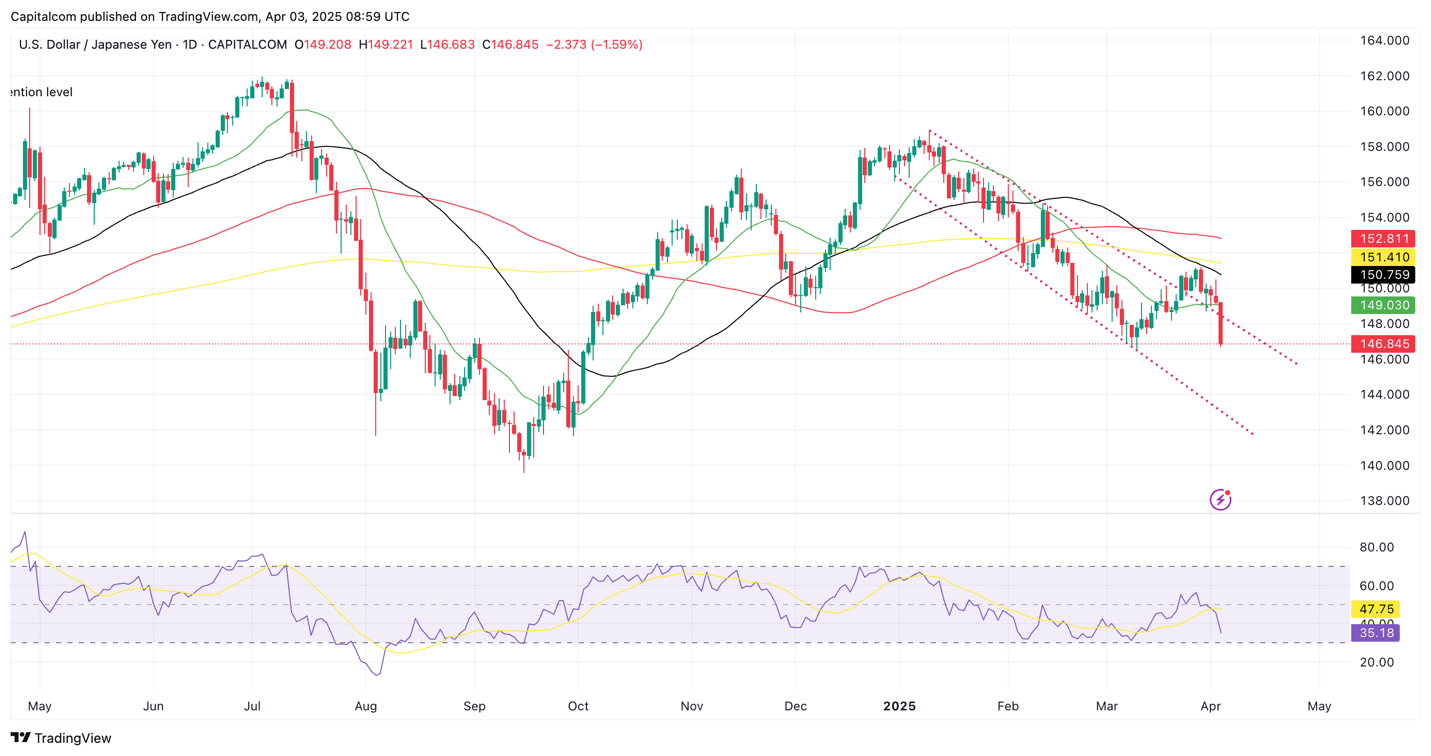USD slumps as Trump imposes sweeping tariffs
Trump has announced both baseline and reciprocal tariffs shocking markets and causing the dollar to drop
The Trump administration announced on Wednesday the implementation of sweeping tariffs on imports, sparking significant volatility across global markets. A 10% blanket tariff on all imports will take effect on April 5, while higher “reciprocal” tariffs targeting specific trading partners will follow on April 9.
Some countries will face only the base 10% rate, while others—including major economies—will be hit with much steeper duties. On average, the effective tariff burden is estimated at around 20%, far exceeding market expectations. This has triggered a sharp repricing of growth forecasts, weighing on equities and overall risk sentiment.
However, the US dollar has turned out to be one of the biggest losers of ‘Liberation Day’. The dollar index dropped to a 6-month low on Thursday shedding over 1.3% as in investors asses the higher impact of these tariffs on US growth.
US dollar index (DXY) daily chart
Past performance is not a reliable indicator of future results.
Currency Movements Reflect Shifting Global Dynamics
Currency markets reacted swiftly. Both EUR/USD and GBP/USD surged to six-month highs, while USD/JPY fell to its lowest level since last autumn. Under the new tariff regime, the EU, UK and Japan will face 20%, 10% and 24% tariffs respectively.
European Commission President Ursula von der Leyen called the move a "major blow to the world economy" and warned of retaliatory measures: “We are preparing a further package of measures to protect our interests.”
Meanwhile, the UK is seeking to preserve ties with the U.S., especially post-Brexit, emphasizing the importance of a future trade agreement.
Economic Isolation? A Return to Protectionism
The bottom line is that uncertainty remains high — even without considering that some of these new tariffs might be cancelled or revised after a few days of negotiations. Rough estimates suggest the economic impact could be even greater than the Smoot-Hawley tariffs of the 1930s - a set of protectionist trade policies that raised import taxes and are widely believed to have worsened the Great Depression by triggering global retaliation and slowing international trade.
This isn’t just about trying to balance trade — it’s more like the U.S. is trying to become completely self-reliant. The U.S. is attempting to produce and consume everything internally instead of relying on global trade. At this level of tariffs, the U.S. would basically isolate itself economically, cutting off most of the relations with other countries. It’s hard to imagine this being an improvement to the current situation.
Outlook: FX Momentum and Technical Picture
Despite stretched technical indicators like the RSI approaching overbought levels, EUR/USD and GBP/USD appear poised to continue their upward momentum in the near term. Both pairs broke above key resistance levels during the initial market reaction, although some short-term corrections may be expected.
On the other hand, USD/JPY has re-entered its descending channel, after briefly testing upper resistance in recent sessions.
EUR/USD daily chart

Past performance is not a reliable indicator of future results.
GBP/USD daily chart

Past performance is not a reliable indicator of future results.
USD/JPY daily chart

Past performance is not a reliable indicator of future results.
